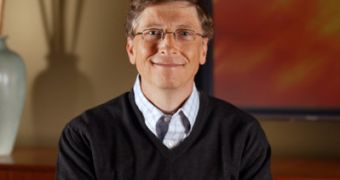From the 10GHz processor to the natural graphical user interface, the next 10 years will bring additional innovation into the world, implemented in mundane scenarios. Microsoft Chairman Bill Gates offered his perspective on the upcoming decade at the Financial Analyst Meeting 2007. "I get to kick things off by talking about the next 10 years of software, and some of the big breakthroughs that are going to be made, and how Microsoft has been investing in our research and our product groups and making sure that we drive these forward on our platforms, and together with our partners that we really seize the opportunity to have software change the world. Now, this is what Microsoft has been about for over 30 years. But we would say the next 10 years are by far the most interesting," Gates stated.
Microsoft's Chairman revealed that the current level of capability associated with software products will continue to evolve in order to enable people to better communicate, work, share, create, manage their business etc. Gates promised that Microsoft will commit a comprehensive amount of resources for research and development in order to meet the evolution of the IT environment. Gates emphasized the continuous growth of the processor, as its Windows platform is inherently tied to this piece of hardware.
"First we have the constant improvement in the processor itself-that Moore's law, exponential increase in transistors, is not slowing down. There's a bit of a challenge in that those transistors will come to us without increasing the clock speed the way we've been able to just easily take advantage of for the last 20 years; that is, instead of doubling the clock like they've been able to, that piece will actually be going up at quite a modest rate. We may get up into the 10-gigahertz range, but not much higher than that, even, say, five or six years out," he commented.
Still, Gates envisioned a future where multiple processors and parallel execution will the main way to deliver additional power. And moving from under the hood to the surface, Gates underlined the trend to migrate from traditional user interaction models to natural graphical user interfaces. Nintendo's Wii, Apple's iPhone and Microsoft's own Surface are examples of how the user interaction with technology will continue to change.
"So when Microsoft thinks about these 10 years and all these breakthroughs that we, because of our huge R&D investment and the great people we have, that we get to lead in, how do we organize that? How do we bring that together? Well, there's always a challenge in a product company that you want to have engineers who are very focused on the next two years, on that next release, and really thinking through practically the testing, the compatibility-all the issues that have to do with getting that next step forward done," Gates added.

 14 DAY TRIAL //
14 DAY TRIAL //